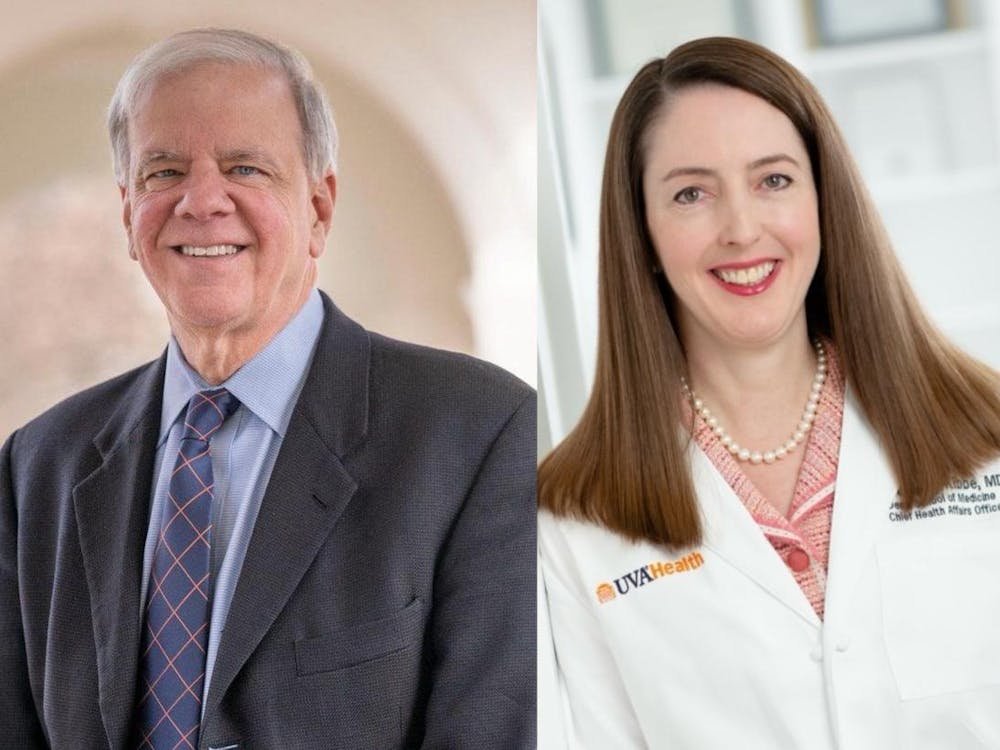Thousands of scientists and supporters of science-based policy descended upon the U.S. Capitol Saturday for the D.C. March for Science in Washington, D.C., with more than a hundred marchers from Charlottesville alone. While motivations of individual marchers varied, most were spurred to action by proposed cuts to federal National Institute of Health and National Science Foundation funding, the current administration’s dismissal of environmental issues and what many consider a lack of fact-based policy and executive decisions.
Daniel Engel, a researcher in the department of microbiology, immunology and cancer biology, coordinated buses for “Cvillians March for Science,” a group of 143 protestors from the University and Charlottesville communities that traveled to the march in D.C.
The march was one of over 600 happening around the world on each of the seven continents.
Marchers took great scientific and creative liberty with their signs and outfits. Many wore pink, knit “brain hats” or lab coats, with signs reading “In science we trust,” or “Remember polio? Me neither!”
Others were more pointedly political. A number of signs read “I’m with her,” and featured a photo of Mother Earth, and one referenced Trump’s “p—y” statements, saying “Schrodinger’s [image of a cat] fights back.”
“We were inspired, I think, by the women’s march,” Engel said. “We’re close enough to D.C., and science in Charlottesville has a big enough presence between the University and local biotech industries.”
Local and national organizers, as well as many speakers, emphasized the march was political, but not partisan.
“I’m very concerned about the direction the current administration would like to take us in,” Dean Kedes, another University immunology and cancer biology researcher and organizer of “Cvillians March for Science,” said. “It’s short-sighted, and again, it’s political, not rational, decision-making. Science can be completely non-partisan — the facts, and nothing but the facts.”
Kedes said he had two personal stakes in the march — that of a concerned citizen and that of a father.
“I’m worried about the world that my kids are going to inherit,” Kedes said. “I want them to be able to enjoy the air they breathe, the water they drink, and to be scientists in the future themselves if they wish to be so.”
Prior to the march, organizers arranged for a series of teach-ins around the Washington Monument to begin at 9 a.m. A rally took place from 10 a.m. to 2 p.m., when marchers began their procession to Union Square in front of the U.S. Capitol building.
The rally featured a diverse group of speakers and performers. They came from all walks of life — from young “Aspiring Astronaut” Taylor Richardson to Bill Nye, a famous science communicator, CEO of The Planetary Society and host of “Bill Nye Saves the World” on Netflix.
“Without scientifically literate citizens, the United States — any country in fact — cannot compete on the world stage,” Nye said. “Science must shape policy. Science is universal. Science brings out the best in us. With an informed, optimistic view of the future, together, we can — dare I say it — save the world.”
Many of the speakers were not scientists. Maya Lin, the artist behind the Vietnam War Veterans memorial, stepped up to the stage, as did Questlove Gomez, musician, DJ, producer, journalist and co-host of the event.
Earth Day founder Denis Hayes was another prominent speaker.
“Forty-seven years ago, on the first Earth Day, 20 million regular, every-day Americans, including millions of angry students, rose up and stormed the political stage and demanded — demanded — a clean, healthy, just, resilient environment,” Hayes said. “Forty-seven years later, to my astonishment, we’re back in the same spot.”
Three of the “Cvillians” in attendance were Beth Wagner, Marissa Gonzales and Katelyn Ahern, all second-year students in the University’s biomedical sciences graduate program. They said all their funding comes from National Institute of Health grants, and recent cuts to NIH funding — in addition to broader scientific and climate change concerns — inspired them to march.
“I guess I was kind of naive and thought the NIH would be safe, but nothing is safe,” Ahern said. “So I really felt like I had to come here and make a statement for that.”
It rained for almost the entirety of the rally and march, but marchers were not deterred.
“Who speaks for the trees? We speak for the trees!” echoed through the streets.
Engel said the marchers’ message could only be viewed as positive. He said he felt like he did not have a choice when it came to whether or not to march.
“Science as an institution has come under attack by some politicians, and it’s gotten to the point where we feel threatened, and so it almost feels like it’s not a choice for me to participate in this, I feel like I really have to,” Engel said.
Correction: The article previously misstated that cuts were made to the NIH and the NSF. The cuts to those entities are currently only proposed.





